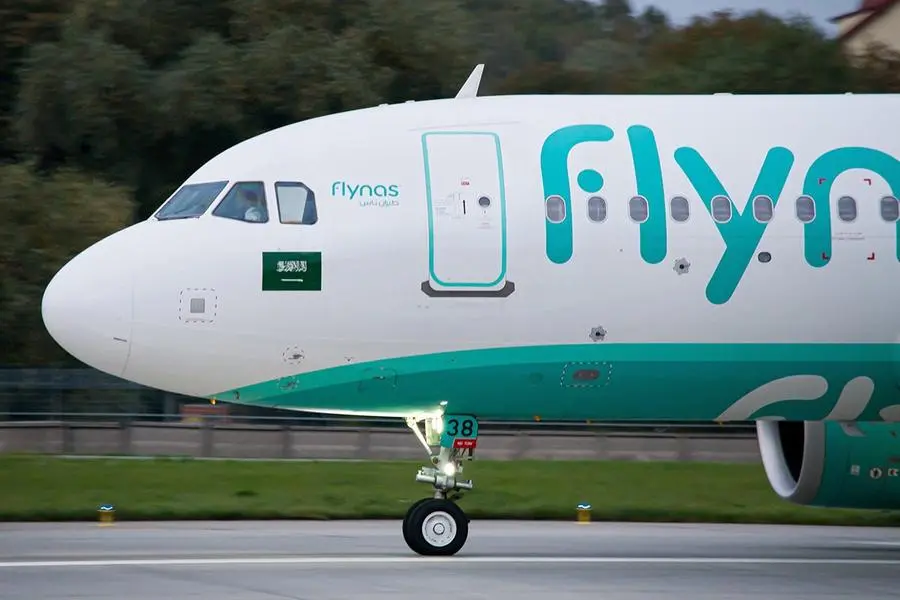Kuwait - The new Mercedes-Benz E-Class, launched today by Abdul Rahman Albisher & Zaid Alkazemi Co., Authorized General Distributor for Mercedes-Benz in Kuwait, is the pacemaker when it comes to safety, comfort and environmental compatibility in its market segment.
With its unique combination of driver assistance systems, this saloon further consolidates the leading position of Mercedes-Benz in the luxury class.
Features include a drowsiness detection system, Adaptive Highbeam Assist and the proximity control system which is capable of performing automatic emergency braking when there is acute danger of a collision.
"We expect the new E-Class to be a firm favourite with our customers and build an even stronger following than the outgoing model," said Horst J. Neuber, General Manager, Albisher & Alkazemi Co.
Mercedes-Benz has improved the already exemplary long-distance comfort of the E-Class even further in the new saloon, principally through the use of intelligent body shell technology with up to 30 percent greater rigidity, further improved seats and a newly developed suspension whose shock absorbers automatically adjust to the current driving situation. The optional air suspension now works in combination with an electronic damping system.
The outstanding safety and comfort of the E-Class are matched by its environmental compatibility and economy: the four- and six-cylinder engines are direct-injection units, and consume up to 23 percent less fuel than before.
Petrol engines: 20 percent fuel saving thanks to direct injection
Mercedes-Benz equips the BlueEFFICIENCY models E 200 CGI and E 250 CGI that will arrive later this year with the newly developed four-cylinder direct petrol injection engine with a displacement of 1.8 litres, turbocharging and variable intake and exhaust camshafts. The E 200 CGI BlueEFFICIENCY (184 hp) is equipped with a six-speed manual transmission and the ECO start/stop function as standard, and consumes only 6.8 litres of premium petrol per 100 kilometres (combined NEDC consumption, provisional figure). This equates to 159 grams of CO2 per kilometre.
In the E 250 CGI BlueEFFICIENCY (204 hp), which has a five-speed automatic transmission as standard, maximum torque is now 310 newton metres, which represents an increase of more than 26 percent over the previous V6-engine. At the same time the NEDC fuel consumption is reduced by over 20 percent to 7.3 litres per 100 kilometres, equating to 174 grams of CO2 per kilometre (provisional figures).
As before, the E 350 CGI BlueEFFICIENCY (available in August 2011) with direct petrol injection (292 hp) and the top-of-the-line E 500 (388 hp) are included in the range of engine variants in the new E-Class. By optimising details of their design, it has been possible to reduce the fuel consumption of these V6/V8 models by up to 0.6 litres per 100 kilometres. For the ultimate in performance, the E 63 AMG from Mercedes-AMG develops 525 hp.
Mercedes-Benz equips the V6 and V8-models as standard with a seven-speed automatic transmission, steering wheel selector lever and shift paddles.
Safety: "Intelligent" partner thanks to unique combination of assistance and protection systems
"For more than 50 years, the saloons in the E-Class and their predecessors have been acknowledged as trendsetters in the safety field. The new saloon continues this tradition with an unrivalled combination of the very latest assistance and protection system whose concept and development are based on what actually happens during accidents.
These technologies make the E-Class an "intelligent partner" able to see, feel, react reflexively in critical situations and if necessary act independently to prevent accidents or mitigate their consequences. With this concept, the new Mercedes model not only protects its own occupants, but also contributes decisively to the greater safety of other road users" said Palli Musthafa, Senior Manager Sales & operations, Albisher & Alkazemi Co..
The new E-Class is the first car in the world to be equipped with headlamps which adapt to the traffic situation and respond automatically to avoid dazzling other drivers. The optional Adaptive Highbeam Assist uses a camera on the windscreen to recognise oncoming traffic and vehicles moving ahead and to control the headlamps so that their beams do not reach the other vehicle. This achieves the best possible road illumination in a given situation. The range of the dipped headlamp beams can be extended from 65 to as much as 300 metres. If the road ahead is clear, the system performs a gentle transition to high beam.
Mercedes-Benz offers this new system in a lighting package that includes bi-xenon headlamps, the Intelligent Light System and LED daytime driving lights.
The Lane Tracking package for the new E-Class includes Blind Spot Assist familiar from the S-Class, and as a new development, Lane Keeping Assist which seeks to prevent the vehicle from leaving the road unintentionally. When the system recognises that the car is drifting from its lane, the driver is prompted to take counter steering action by brief but unmistakable vibrations of the steering wheel.
Night View Assist from the S-Class is now also available as an optional extra for the new E-Class. Mercedes-Benz has improved this system with a special pedestrian detection function: as soon as Night View Assist Plus recognises pedestrians ahead of the car, they are highlighted in the onboard display to provide a greatly enhanced warning effect.
Detection of drowsiness based on 70 parameters as standard
Thanks to an innovative technology, the new E-Class is very sensitive to its driver's attention level, and warns him or her of drowsiness in good time.
This new ATTENTION ASSIST drowsiness detection system, which is standard equipment, is equipped with highly sensitive sensors that continuously monitor more than 70 different parameters. Observing the driver's steering behaviour has proved to be a particularly strong indicator: several years of practical research by Mercedes engineers have shown that drowsy drivers make minor steering errors which they often correct very rapidly in characteristic ways. These corrections are recognised by a highly sensitive steering angle sensor.
Automatic emergency braking when a collision is imminent
The well-proven, radar based assistance systems from the S-Class are now also optionally available to E-Class customers. An enhanced long-range radar sensor now has a range of 200 metres (previously 150 metres), and is able to monitor the mid-distance so that dynamic events such as a vehicle ahead suddenly pulling out to overtake can be detected even more effectively. The two wide-angle short-range radar sensors, which have a range of around 30 metres, continue to be included in the system.
The radar-supported systems are able to assist the driver with emergency
braking. Their sensors are linked to the Brake Assist PLUS system, which automatically calculates the braking pressure to prevent a collision in critical situations. The driver is given an audible and visual warning at the same time. When the brake pedal is pressed, the system immediately provides the calculated level of braking assistance.
If the driver fails to respond to the warnings, the radar system first initiates partial braking action. As a second stage, if there is still no driver response and a collision is unavoidable, emergency braking is initiated. This can reduce the severity of an impact considerably as the system can be regarded as a kind of "electronic crumple zone".
Active Bonnet, seven airbags and PRE-SAFE® as standard
During the course of its development, the new E-Class was subjected to more than 150 high-speed crash tests. The crumple zone principle invented by Mercedes safety pioneer Béla Barényi has been continuously improved by the engineers in Sindelfingen. The front-end deformation zone of the E-Class acts on four independent levels, and is even more effective than before. The increased use of extra-high-strength steel alloys also helps to ensure that the bodyshell is able to withstand high impact forces. Around 72 percent of all the body panels are made from these high-tech steels--yet another unrivalled figure in passenger car development.
With seven airbags as standard, belt tensioners, belt force limiters, crash-responsive head restraints and ISOFIX child seat attachments, the new E-Class has even more extensive safety features than the preceding model. Another new feature is the Active Bonnet, the latest development to result from Mercedes-Benz's long-standing commitment to pedestrian protection. It is standard equipment in the new E-Class. In the event of an impact, a system of springs raises the rear section of the bonnet by 50 millimeters in a fraction of a second, thereby increasing the available deformation space. Thanks to the cleverly designed mechanism, the driver is able to reset the Active Bonnet to its normal position without having to visit a workshop.
Another standard feature is the preventive occupant protection system PRE-SAFE®. In potentially hazardous situations this reflexively activates precautionary protective measures for the vehicle occupants, so that the seat belts and airbags are able to fulfill their protective function to the full during an impact.
Comfort: Further progress through adaptive shock absorbers and improved air suspension
As well as being a trendsetter in the safety field, the E-Class has been setting the standards for long-distance comfort in this vehicle class for several decades. Bettering the already high level of the preceding series, Mercedes engineers have achieved further advances with the new saloon--especially where ride, seating and climate comfort are concerned.
Standard equipment includes a further improved suspension with adaptive shock absorbers. These automatically adapt to the current driving situation by reducing the damping forces when driving normally, thereby noticeably improving ride comfort. When taking bends at speed or during rapid evasive action, the system switches to the maximum damping effect so that the saloon is stabilized to best effect.
A version with dynamic damping characteristics and a lowered suspension is available as an optional alternative to the standard suspension (standard for the AVANTGARDE line).
The air suspension system optionally available for the V6 models (standard in the E 500/E 500 4MATIC) has for the first time been combined with an electronically controlled damping system which processes various sensor signals and controls each wheel independently. In this way Mercedes specialists have achieved significantly better ride comfort while improving handling safety and agility at the same time. The driver is able to select either Comfort or Sport mode at the touch of a button.
Well-proven seat technology with a new design
When it came to developing the seats for the new E-Class, Mercedes-Benz chose
a new, enhanced version of a well-established Mercedes concept, namely padded seat piping--a sophisticated and demanding upholstery technique that is only used by Mercedes-Benz. This involves the insertion of an additional foam filling under the fabric or leather cover, and gives an immediate feeling of comfort and well-being when sitting in the car. There are different versions of this padded seat piping: in the basic model and AVANTGARDE line the upholstery has horizontal piping, while the ELEGANCE line has longitudinal piping and is reminiscent of the well-known and well-proven Mercedes seat design from the 1960s and 70s.
Active multicontour seats with massage function from the S-Class
The active multicontour seat package (optional) includes newly developed multicontour seats with luxury head restraints and a two-stage massage function in the backrest that has proven highly successful in the S-Class. Depending on the steering angle, lateral acceleration and vehicle speed, fast-acting piezo-electric valves on the air chambers in the backrests vary their pressure and volume to give the driver and front passenger even better lateral support.
On request the E-Class is also available with a rear seat unit consisting of two comfortable, single seats. This rear-seat comfort package includes seat heating, leather upholstery, a centre console, comfort head restraints, roller blinds in the rear doors, an electrically operated roller blind for the rear window, comfort sun visors and a central module for the optional ski bag.
Individual climatisation modes at the touch of a button
Mercedes-Benz has developed a climate control system for the E-Class which not only allows individual temperatures to be set in three zones - for the driver, front passenger and rear passengers - but also offers different "climatisation modes". If this optional multi-zone THERMOTRONIC system is specified, the occupants of the new E?Class are able to select "Diffuse", "Medium" or "Focus" modes at the touch of a button, and so adapt the air volume and distribution to their personal preferences without sacrificing the convenience of automatic mode. In standard trim the new E-Class is equipped with the two-zone THERMATIC automatic climate control system.
Design: Distinctive lines as an expression of effortless superiority and status
In 1995 the E-Class was the first Mercedes model to appear with the widely acclaimed twin-headlamp face - a highly symbolic design feature that still characterises the identity of the E-Class. Nonetheless, the design idiom has remained fluid--even for this characteristic styling feature--and has been adapted to suit the very self-confident, more masculine overall appearance of the saloon.
The designers have now reinterpreted these four "eyes" as rectangles, with a direct reference to the interesting geometrical shapes found in cubism. They resemble precious gems that have been precisely set into the wings. In the same way, the radiator grille with its three- dimensional chromed surround, dynamic arrow-shape and more upright position underlines the status of the car as the epitome of a business saloon.
A sophisticated interplay between lines and surfaces is one of the hallmarks of today's Mercedes design. Large concave or convex surface areas are structured by taut, clearly defined lines. This design concept has been perfected down to the last detail in the new E-Class. The side contours become connecting features that influence the entire body design, that is to say not just the side aspects but also the front and rear-end styling.
At the rear, this harmonious flow culminates in a new feature: a graceful line that follows the rear wheel arches and lends a clear shape to the imposing, muscular contours of the rear wings. Here Mercedes aficionados will recognise styling features reminiscent of the famous "Ponton Mercedes". Introduced in 1953, this model underlined its self-assured character by means of similarly striking contours. In addition to this symbolic role, the rear styling treatment is also a hallmark of the E-Class which well illustrates how tradition is made to harmonise with the future in this model series.
Typical Mercedes attention to detail has also been lavished on the interior of the new E-Class where the designers have ensured that every feature appeals in both emotional and functional terms with its form, colour or material. The result is a harmonious whole--an atmosphere in which the car's occupants immediately feel safe and protected, and long journeys can be enjoyed without any feeling of effort or stress. In short: typically E-Class; Engineered for Success!
-Ends-
Contact:
More information from Mercedes-Benz E Class is available online at: www.mercedes-benz.com.kw
© Press Release 2009



















